National
“No public events scheduled”
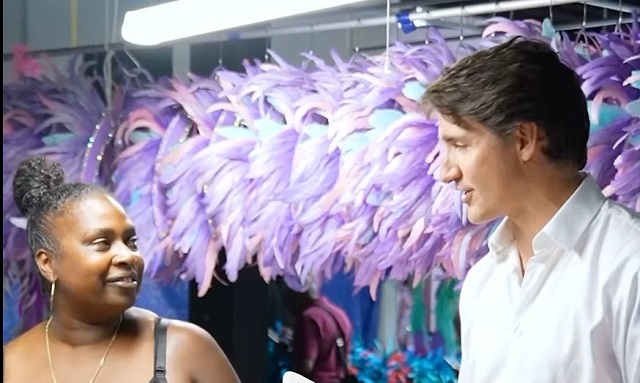
|
|
The PM is on a national campaign tour. He lies about it every day.
Here’s Justin Trudeau at the Saldenah Mas Camp in Toronto on July 18. Volunteers spend months making costumes every year for the Toronto Caribbean Festival. It’s a fantastic tradition. My father, who lived in Barbados for a while, used to drive us up from Sarnia every year for the parade.
The prime minister’s public itinerary, which is emailed daily to members of the Parliamentary Press Gallery and posted on his website, said that on July 18 he’d be in Ottawa for the Change of Command ceremony. It acknowledged no other public event.
The itinerary usually goes out around 7 p.m. each night and lists the PM’s public activities for the next day. Then on the morning of the day, we get an itinerary that either repeats the night-before email, or modifies it. On July 15 the night-before itinerary said the prime minister would be in “Southwestern Ontario” and would have “no public events scheduled” the next day, July 16.
Here’s where it gets a little weird. I never received an itinerary for July 16 that said anything else. The itinerary that went out on the morning of July 16, like the night-before email on the 15th, said “no public events scheduled.” But on the PM’s website, the itinerary that’s there now lists a meeting with Kitchener mayor Barry Vrbanovic.
Later that day, Trudeau was in Scarborough at Junior Carnival. “You could just feel the energy in the air!”, the PM tweeted.
The first I learned of the PM’s meeting with Kitchener mayor Vrbanovic was when reporters received a pool report from a CP reporter, a couple of hours after the meeting ended.
Paul Wells is a reader-supported publication. To receive new posts and support my work, consider becoming a free or paid subscriber.
Pool reports have been used in many countries for many years. If there’s not room for every reporter or photographer who might want to attend, a smaller number are designated, on the understanding that they’ll share their observations and images with everyone who couldn’t go. It’s not great, because typically the pool reporter is not permitted to ask questions.
Sometimes journalists vote to determine who among them will be the pool. Sometimes it’s a Canadian Press reporter, by tradition and convention. In all recent cases with Trudeau, it’s been a CP reporter — because no other news organization except CP has been informed of these events.
There’s also a separate broadcast pool, in which all the broadcast networks participate. That way one camera goes to pooled events, and every network gets the images and audio.
The CP reporter’s account of the Vrbanovic meeting said Vrbanovic “thanked Trudeau for his government’s programs that provide funding to municipalities.” Trudeau “said he will discuss issues that matter to the region including housing and climate change with Vrbanovic.” At this point, “The pool reporter was then asked to leave the room.” I’ll bet she was.
So here’s what I’m here to write about today. This has become standard operating procedure for Justin Trudeau and his staff during the difficult summer of 2024: they claim in public every day that the the PM has “no public events scheduled.” Even though he is in a different city every day. And he has public events scheduled. In fact, he is in the city in question so he can attend the public events he claims aren’t on his schedule.
And a small number of journalists are told, every day, “for information purposes only” — i.e., on the condition that they not tell other journalists or the public — about the public events the PM has scheduled but is lying about.
On Monday Trudeau’s itinerary said he was in “Northern Alberta” and had “no public events scheduled.” Later on Monday he was in Hinton, AB to “get a briefing on the status of the Jasper wildfire, as well as meet with the province’s premier and evacuees who fled the blaze.” I know this because it was in the CP report. “Trudeau did not speak with reporters while he was in Hinton,” the story adds.
I wrote about this on Notes, Substack’s fun short-form social-media platform. A reader responded (and here I paraphrase) that, well, maybe the PM wanted to do serious business in a crisis situation without having to dodge snarky questions from rude reporters. And, you know what? Fair enough.
Thank you for reading Paul Wells. This post is public so feel free to share it.
Share
But here’s the thing. I’ve covered a lot of political leaders in emergency settings. It’s perfectly routine for the advisory to say what a leader will do today, but to say a given event is “Closed to Media.” Or for reporters to be sequestered in a room, well away from the meeting between PM and premier, with time for questions only after the meeting ends.
What’s rarer — what I’d never actually seen before — is for a PM to fly to Alberta, for his staff to say he’s going to be in Alberta, but for them to claim he won’t be doing anything while he’s there.
Incidentally, the version of the PM’s itinerary for Monday that’s on his website now says he had a meeting with Danielle Smith and with emergency responders. This version was never sent to reporters, either before or after the meeting. Absurdly, the itinerary has also been corrected to put Hinton in “Central Alberta” instead of “Northern Alberta.”
A colleague at a large news organization who’s vocationally preoccupied with following politicians’ schedules tells me this has happened “multiple times” in recent weeks: the itinerary on the website gets updated after the fact, in ways that do not reflect what reporters were told in real time. This is the smallest possible routine coverup, for the smallest possible benefit, that I have ever seen.
Pretty soon, news organizations are going to have to start explaining why Justin Trudeau’s summer schedule is so surprising to us.
Here’s Justin Trudeau making a “surprise appearance” at Vancouver Pride on Sunday. Here’s the PM making a “surprise appearance” at Winnipeg’s Filipino Folklorama pavilion on Monday. I’m here to tell you, reporters were not informed of either event — except the ones who were given a quiet heads-up so there’d be cameras on hand. Although how can you be expected to believe me? The PM’s gaslighting website says he “will attend” Pride on Sunday. At least they haven’t rigged the Monday advisory so it retroactively lies about having told us he’d be at the Winnipeg event.
I suspect today’s post will create some buzz, so I want to be careful to say precisely what I mean to say. Politicians are under no obligation to tell anybody how they spend every minute of their day. (It’s worth noting, however, that the public agendas of leaders in other places are sometimes more detailed than in Ottawa: here’s Emmanuel Macron’s and Joe Biden’s agendas for today. The UK’s Keir Starmer seems less forthcoming.) And it’s routine for leaders’ teams to acknowledge calendar events while also emphasizing that the public and journalists can’t attend. What’s an innovation is this business of claiming the PM has nothing “public” on his schedule when he is, in fact, on tour to do public events for which he will seek tightly controlled media and social-media credit.
It’s become entertaining to learn, after the fact, what the hell has been going on. Last week the PM was on vacation in British Columbia. We receive daily itineraries during a vacation, with no public events scheduled, and I don’t begrudge anyone any vacation time. Then he was back in Ottawa for two days, and then he was back in the “Lower Mainland” of BC with “no public events scheduled.” That was Pride, as it turned out. I’m pretty sure that when the big guy was on an airplane for the second time in as many days, he knew why. Eventually so did we.
Since I’ve started making a fuss about this stuff on Notes, I think the PMO is starting to get nervous. Here’s the itinerary we were sent for today, Tuesday, at 7:03 a.m. EDT:
And here’s the updated itinerary we received at 2:33 p.m.
Thanks for the update! Unfortunately, every event in the updated itinerary occurred before the PMO sent it out. When covering your tracks, try not to be so terrible at it. Fortunately the pool report should be landing in my inbox any minute.
I asked Andrea Baillie, the Editor-in-Chief of the Canadian Press, for an explanation of the national newsgathering cooperative’s role in these activities. She replied:
“It’s long been part of CP’s mandate to be with prime ministers as they carry out their duties. Alongside major broadcasters, we provide ‘pool coverage.’ That means we gather details on what the PM said and did on behalf of all press gallery journalists, at events where there is limited space. Typically, the PMO provides embargoed information (i.e. times and locations) on the PM’s schedule on short notice so we can get there on time. The pool is bound by an agreement to use this information for planning purposes only until the events take place, at which point the CP reporter provides details on what they saw and heard in a note sent to all press gallery journalists.”
I want to be clear that I intend no criticism of CP, which has come in for some cheap shots from Pierre Poilievre and others. Reporters who are told of politicians’ activities ahead of time routinely keep this information to themselves, as I have done for politicians from many parties. Including, come to think of it, while covering elections in other countries. It’s the only way to reconcile coverage of an event with politicians’ preference for planning in secrecy. In particular, readers who are quick to dream up heroic scenarios for reporters to act as their proxy to sabotage politicians’ schemes — You should just refuse to cover it! You should just shout your questions until they’re forced to answer! — are typically less thrilled when reporters try that stuff against the politicians they like better.
But reporters are obviously getting played here. When the prime minister of Canada deploys half-way across the country, with his staff photographer and videographers; and then tells hundreds of journalists he’s got nothing planned for the next day or the day dawning; and smaller numbers of journalists already know that’s not true; and then the PM meets public officials or crowds of voters, speaks on public-policy issues, and sends out his own shop’s versions of those conversations and professionally curated images; and then (I can’t believe I’m writing this part) his staff sneaks into the website to cover their tracks ex post facto — well, this is a lake of bullshit so deep I can’t touch bottom, and at the very least, we should let you know it’s going on.
Now watch the commenters under this post line up, like iron filings in a magnetic field, to reveal their polarity.
People who hope the Liberals will win will be furious at me for nitpicking. THIS MAN IS DOING THE BUSINESS OF THE COUNTRY AND YOU JUST WANT TO TEAR HIM DOWN, they’ll say. YOU’RE NO BETTER THAN BOB FIFE. HE’S SMART TO KEEP YOU AWAY FROM SERIOUS WORK.
The ones who wanted him gone years ago will say, AH-HA. THE MAINSTREAM MEDIA IS PLOTTING WITH LIBERALS TO HIDE THE SATANIC PM. YOU HOWLED WHEN POILIEVRE DID FAR LESS, BUT NOW YOU’RE PLOTTING! PLOTTING! WITH YOUR LIBERAL PAYMASTERS.
What’s much rarer will be voters who would actively prefer, say, a Liberal government that doesn’t routinely lie about what its PM is doing. Let me tell you, I sure notice every time a supporter of the Liberals who claims to support the Liberals because they like honest reporting and evidence-based policy suddenly complains about the reporting and evidence that make their guy look bad.
As for Poilievre, I’ve written about his media manipulation at length and, I suspect, will again. These attitudes — good coverage good, bad coverage wicked and worth any artifice to avoid — are widespread and party-agnostic. But it’s worth pointing out that Poilievre now routinely sends out advance notice of his rallies, and has lately been setting aside a few minutes for brief sessions with individual reporters after such events. This one with a Sudbury reporter was chippy but informative; this one with The Gazette’s Aaron Derfel caught Poilievre in a relatively introspective mood.
Mostly I’m not surprised when any public figure avoids scrutiny. Journalistic scrutiny is so rare these days, for reasons I’ve written about at length, that nobody should be surprised when it draws an annoyed and defensive reaction from politicians who view any surprise as an attack. Or, indeed, from anybody at all. “Freedom of the press” loses friends quickly in almost any concrete case.
But again, I’ve never seen this before, a Prime Minister of Canada who demands that his staff enable him as he claims to be taking the summer off even as he’s campaigning for re-election. One more irony: If you’re paying half the salary of most Canadian journalists, even while you’re sending emails to them full of lies about your schedule, you’ve made destroying their credibility a very expensive object of government policy.
Finally, what does all this tell us about the year Justin Trudeau’s having?
I’m not Catholic, but I view this extended fibbing campaign as a venial rather than a mortal sin. It’s mostly kind of baffling.
But it has precedent. In his memoir, Trudeau recollects the times he introduced himself as “Jason Tremblay” or as “Justin St-Clair” as a student or a young adult, to avoid being judged before he could make his case. He learned early how much of himself he wanted others to see.
What’s harder to discern is the point of the artifice. Trudeau gave an extended interview to the CBC days before the disastrous Toronto—St. Paul’s byelection. Within days after the returns from St. Paul’s were in, he adopted this duck-and-cover routine. To what end? Does he seriously hope to pick up 15 points of polling deficit by pushing out Instagram photos of parade floats? Does he think he can keep this up for a year until an election?
While we wait to find out, if I were on the PM’s communications staff and I had pre-existing plans to be working somewhere else in a year, this would be an excellent week to resign, because this week you’d get to do it on principle.
I hear the PM will be in St. John’s tomorrow. Tonight we’ll see whether it’s on the itinerary. For the full experience, subscribe to Paul Wells.
For the full experience, subscribe to Paul Wells.
Break The Needle
B.C. doubles down on involuntary care despite underinvestment
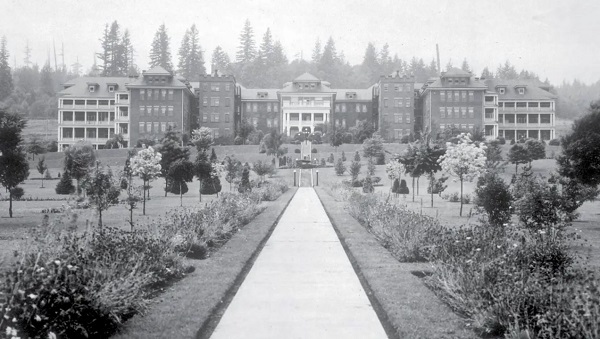
By Alexandra Keeler
B.C.’s push to replace coercive care with community models never took hold — and experts say province isn’t fixing that problem
Two decades ago, B.C. closed one of the last large mental institutions in the province. The institution, known as Riverview Hospital in Coquitlam, had at its peak housed nearly 5,000 patients across a sprawling campus.
There, patients with mental illnesses were subjected to a range of inhumane treatments, city records show. These included coma therapy, induced seizures, lobotomies and electroshock therapy.
When the province transferred patients out of institutions like Riverview during the 1990s and early 2000s, it promised them access to community-based mental health care instead. But that system never materialized.
“There was not a sustained commitment to seeing [the deinstitutionalization process] through,” said Julian Somers, a professor at Simon Fraser University who specializes in mental health, addiction and homelessness.
“[B.C.] did not put forward a clear vision of what we were trying to achieve and how we were going to get there. So we languished.”
Today, amid a sharp rise in involuntary hospitalizations, experts say B.C. risks repeating the mistakes of the past. The province is using coercive forms of care to treat individuals with mental health and substance use disorders, while failing to build community supports.
“We’re essentially doing the same thing we did with institutions,” said Somers, who began his clinical career at Riverview Hospital in the 1980s.
“[We’re] creating a system that doesn’t actually help people and may make things worse.”
Riverview’s legacy
B.C.’s push for deinstitutionalization was driven by growing evidence that large psychiatric institutions were harmful, and that community-based care was more humane and cost effective.
Nationally, advances in antipsychotic medication, rising civil rights concerns and growing financial pressures were also spurring a shift away from institutional care.
A 2006 Senate report showed community care could match institutional care in both effectiveness and cost — provided it was properly funded.
“There was sufficient evidence demonstrating that people with severe mental illness had better outcomes in community settings,” said Somers.
Somers says people who stay long term in institutions can develop “institutionalization syndrome,” characterized by increased dependency, worse mental health outcomes and greater social decline.
At the time, B.C. was restructuring its health system, promising to replace institutions like Riverview with a regional network of mental health services.
The problem was, that network never fully materialized.
Marina Morrow, a professor at York University’s School of Health Policy and Management who tracked B.C.’s deinstitutionalization process, says the province placed patients in alternative care. But these providers were not always well-equipped to manage psychiatric patients.
“Nobody left Riverview directly to the street,” Morrow said. “But some … might have ended up being homeless over time.”
A 2012 study led by Morrow found that older psychiatric Riverview patients who were relocated to remote regional facilities strained overburdened and ill-equipped staff, leading to poor patient outcomes.
Somers says B.C. abandoned its vision of a robust, community-based system.
“We allowed BC Housing to have responsibility for mental health and addiction housing,” he said. “And no one explained to BC Housing how they ought to best fulfill that responsibility.”
Somers says the province’s reliance on group housing was part of the problem. Group housing isolates residents from broader society, instead of integrating them into a community. A 2013 study by Somers shows people tend to have better outcomes if they get to live in “scattered-site housing,” where tenants live in diverse neighbourhoods while still receiving personalized support.
“All of us … are influenced substantially by where we live, what we do, and who we do things with,” he said.
Somers says a greater investment in community care would have emphasized better housing, nutrition, education, work and social connection. “Those are all way more important than medical care in terms of the health of the population,” he said.
“We closed institutions having no [alternative] functioning model.”
Reinstitutionalization
Despite B.C.’s efforts to deinstitutionalize, the practice of institutionalizing certain patients never truly went away.
“We institutionalize way more people now than we ever did, even at peak Riverview population,” said Laura Johnston, legal director at Health Justice, a B.C. non-profit focused on coercive health laws.
Between 2008 and 2018, involuntary hospitalizations rose nearly 66 per cent, while voluntary admissions remained flat.
In the 2023-24 fiscal year, more than 25,000 individuals were involuntarily hospitalized at acute care facilities, down only slightly from 26,600 the previous year, according to B.C.’s health ministry. These admissions involved about 18,000 unique patients, indicating many individuals were detained more than once.
Subscribe for free to get Break The Needle’s latest news and analysis – or donate to our investigative journalism fund.
In September 2024, a string of high-profile attacks in Vancouver by individuals with histories of mental illness reignited public calls to reopen Riverview Hospital.
That month, B.C. Premier David Eby pledged to further expand involuntary care. Currently, B.C. has 75 designated facilities that can hold individuals admitted under the Mental Health Act. The act permits individuals to be involuntarily detained if they have a mental disorder requiring treatment and are significantly impaired. These existing facilities host about 2,000 beds for involuntary patients.
Eby’s pledge was to add another 400 hospital-based mental health beds, and two new secure care facilities within correctional facilities.
Johnston, of Health Justice, says Eby’s announcement merely continues the same flawed approach. It “[ties] access to services with detention and an involuntary care approach, rather than investing in the voluntary, community-based services that we’re so sorely lacking in B.C.”
Kathryn Embacher, provincial executive director of adult mental health and substance use with BC Mental Health & Substance Use Services, says additional resources are needed to support those with complex needs.
“We continue to work with the provincial government to increase the services we are providing,” Embacher said. “Having enough resources to serve the most seriously ill clients is important to provide access to all clients.”
 |
θəqiʔ ɫəwʔənəq leləm’ (the Red Fish Healing Centre for Mental Health and Addiction) is for clients with complex and concurrent mental health and substance use disorders. | BC Mental Health and Substance Use Services website
Inertia
If B.C. wants to avoid repeating the mistakes of its past, it needs to change its approach, sources say.
One concern Johnston has is with Section 32 of the Mental Health Act. Largely unchanged since 1964, it grants broad powers to medical professionals to detain and control patients.
“It grants unchecked authority,” she said.
Data obtained by Health Justice show one in four involuntarily detained patients in B.C. is subjected to seclusion or restraint. And even this figure may understate the problem. B.C. only began reliably tracking its seclusion and restraint practices in 2020, and only collects data on the first three days of detention.
A B.C. health ministry spokesperson told Canadian Affairs that involuntary care is sometimes necessary when individuals in crisis pose a risk to themselves or others.
“It’s in these situations where a patient, who meets very specific criteria, may need to be held involuntarily under the Mental Health Act,” the spokesperson said.
But York University professor Morrow says those “specific criteria” are applied far too broadly. “We have this huge hammer [involuntary care] that sees everything as a nail,” she said. “Involuntary treatment was meant for rare, extreme cases. But that’s not how it’s being used today.”
Morrow advocates for reviving interdisciplinary care that brings psychiatry, psychology and primary care together in community-based settings. She pointed to several promising models, including Toronto’s Gerstein Crisis Centre, which provides community-based crisis services for those with mental health and substance use issues.
Somers sees Alberta’s recovery-oriented model as a potential blueprint. This model prioritizes live-in recovery communities that combine therapeutic support with job training and stable housing, and which permit residents to stay up to one year. Alberta has committed to building 11 such communities across the province.
“They provide people with respite,” Somers said.
“They provide them with the opportunity to practice and gain confidence, waking up each day, going through each day without drugs, seeing other people do it, gaining confidence that they themselves can do it.”
Johnston advocates for safeguards on involuntary treatment.
“There’s nothing in our laws that compels the health system to ensure that they’re offering community-based or voluntary based services wherever possible, and that they are not using involuntary care approaches without exhausting other options,” she said.
“There’s inertia in a system that’s operated this way for so long.”
This article was produced through the Breaking Needles Fellowship Program, which provided a grant to Canadian Affairs, a digital media outlet, to fund journalism exploring addiction and crime in Canada. Articles produced through the Fellowship are co-published by Break The Needle and Canadian Affairs.
Subscribe to Break The Needle.
Our content is always free – but if you want to help us commission more high-quality journalism,
consider getting a voluntary paid subscription.
Banks
Canada Pension Plan becomes latest institution to drop carbon ‘net zero’ target
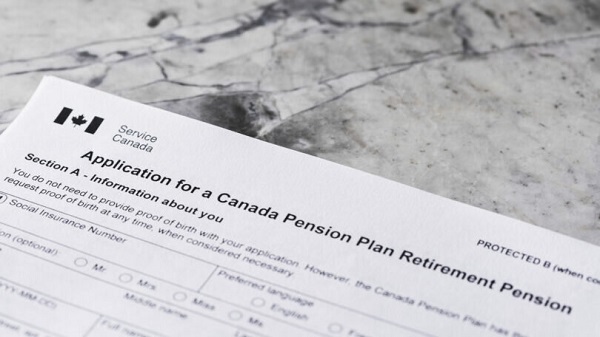
From LifeSiteNews
Changes to the law require companies to more rigorously prove their environmental claims.
The investment group in charge of Canada’s governmental pension plan has ditched its “net zero” mandate, joining a growing list of major institutions doing the same.
According to the Canada Pension Plan (CPP) Investments’ latest annual report, the entity is no longer committed to carbon “net-zero” by 2050. The CPP’s ditching of the target comes after a number of major institutions, including the Royal Bank of Canada (RBC), Toronto-Dominion Bank (TD), Bank of Montreal (BMO), National Bank of Canada, and the Canadian Imperial Bank of Commerce (CIBC), all made similar moves in recent months.
While ditching the net-zero effort, chief executive of CPP Investments John Graham maintained that it is still “really important to incorporate climate and incorporate sustainability” in its long-term investment portfolio.
The dropping of the “climate” target comes as recent changes to Canada’s Competition Act now mandate that companies prove any environmental claims they make, with Graham insinuating these changes were a factor in the decision.
“Recent legal developments in Canada have introduced, kind of, new considerations around how net-zero commitments are interpreted, so that’s caused us to change a little bit how we talk about it, but nothing’s changed on what we’re actually doing.”
Over the past decade, left-wing activists have used “net zero” and “environmental, social & governance” (ESG) standards to encourage major Canadian and U.S. corporations to take particular stands on political and cultural issues, notably in promotion of homosexuality, transgenderism, race relations, the environment, and abortion.
Outside of Canada, many major corporations have announced they are walking back DEI and other related policies. Some of the most notable include Lowe’s, Jack Daniel’s, and Harley Davidson. Other companies such as Disney, Target, and Bud Light have faced negative sales due to consumers fighting back and refusing to patronize the businesses.
Since taking power in 2015, the Liberal government, first under Justin Trudeau and now under Mark Carney, has continued to push a radical environmental agenda in line with those promoted by the World Economic Forum’s “Great Reset” and the United Nations’ “Sustainable Development Goals.” Part of this push includes the promotion of so called net-zero energy by as early as 2035.
-
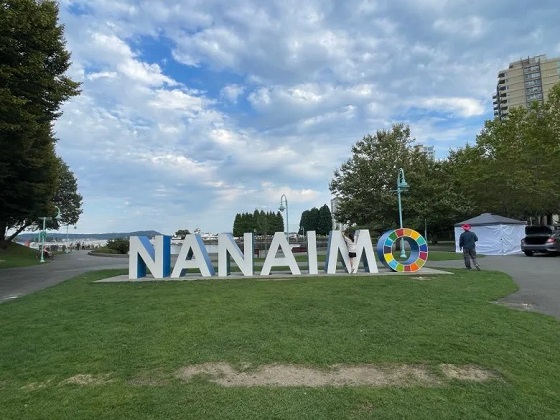
 Addictions6 hours ago
Addictions6 hours agoMan jailed for trafficking diverted safer supply drugs, sparking fresh debate over B.C. drug policies
-
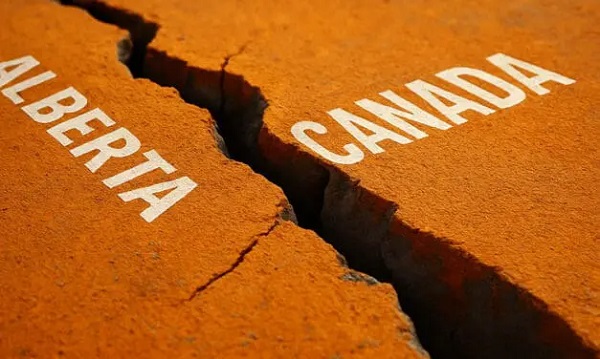
 Alberta8 hours ago
Alberta8 hours agoHow Trump and Alberta might just save Canada
-
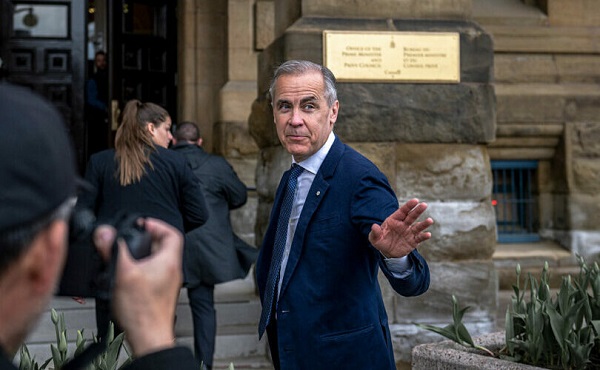
 Business7 hours ago
Business7 hours agoThe Liberals Finally Show Up to Work in 2025
-

 Alberta6 hours ago
Alberta6 hours agoJann Arden’s Rant Will Only Fuel Alberta’s Separation Fire
-

 Banks4 hours ago
Banks4 hours agoCanada Pension Plan becomes latest institution to drop carbon ‘net zero’ target
-

 Bruce Dowbiggin3 hours ago
Bruce Dowbiggin3 hours agoCaitlin Clark Has Been The Real Deal. So Her WNBA Rivals Hate Her
-
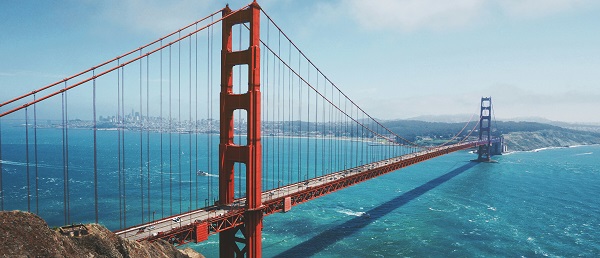
 Daily Caller5 hours ago
Daily Caller5 hours agoThere’s A Catch To California’s Rosy Population Stats
-

 Health2 days ago
Health2 days agoRFK Jr. cancels $700 million mRNA bird flu ‘vaccine’ contract with Moderna over safety concerns









